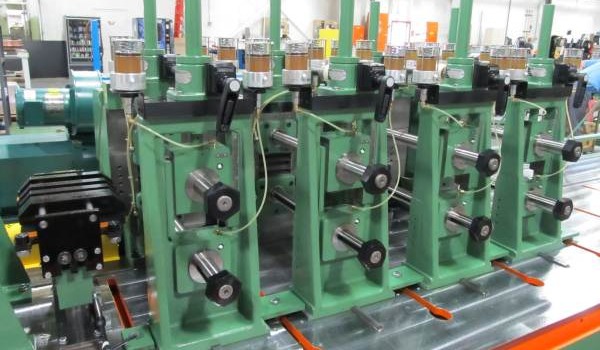One type of mechanical roll forming press used primarily in the roll forming industry is the underslung-driven press. But why were these presses developed and what advantages do they provide to fabricators? In this post, we'll discuss the evolution of underslung presses and their benefits in roll forming.
Underslung-Driven Presses
Years ago, equipment manufacturers developed underslung presses specifically for the roll forming industry primarily because they were quick, and they were short stroked. The most stroke we have a six-inch higher tonnage, but for a 50-ton press, it was either a two-inch or a five-inch stroke or a two-inch and four-inch stroke, depending on what crank you had in there. So it was quick, but we don't run these presses continuous. They run single stroke.
A quality clutch and brake were also included on the press, but they're still single-stroked. If you had to do a form or something in the end, you could still do it. For roll forming, that was the only way you could do it. Hydraulic and air presses didn't really come into play until around the late seventies or early eighties. Mechanical presses were the only choice for the roll forming application. While a stamping press can be used for a cutoff, most times because of bed length or a die train to punch extra things in the cutoff and back up the part.
An underslung press can be used as a pre-notch press, but at that point, a stamping press would be more efficient, especially if you're going to run it continuous. An underslung press is overkill in this situation. It's possible to do palm buttons and single stroke them, but it's better to run continuous in that application.



